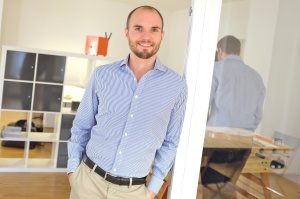Thank you again to our presenters of the last GeoMonday on Geo-Tracking: Here, Familonet, Tracewave and Nanotron.
If you missed this edition or you would just like to recall some of the interesting thoughts and ideas, please find the videos here:
And the presentations here:
[slideshare id=63539880&doc=location-awarenessgeomondays-160628193317&w=500&h=400]
[slideshare id=63539544&doc=160619familogeomondayberlin-160628192355&w=500&h=400]
Keep checking this webpage for more to come …



 Location awareness is definitely one of the killer features of smartphones and it is a driver for innovation for many years now. And still building a high quality location based app is one of the most challenging tasks. This talk shares experiences in how to build a location-based mobile app fulfilling extraordinary demands in accuracy, reliability and power consumption at the same time. It will cover obstacles solved during 3 years of developing Familonet’s next-generation hyper accurate geofencing technology including some specifics of the location APIs of iOS and Android. In addition this talk will give an outlook for use-cases of location services and geofencing in particular.
Location awareness is definitely one of the killer features of smartphones and it is a driver for innovation for many years now. And still building a high quality location based app is one of the most challenging tasks. This talk shares experiences in how to build a location-based mobile app fulfilling extraordinary demands in accuracy, reliability and power consumption at the same time. It will cover obstacles solved during 3 years of developing Familonet’s next-generation hyper accurate geofencing technology including some specifics of the location APIs of iOS and Android. In addition this talk will give an outlook for use-cases of location services and geofencing in particular. David Nellessen is co-founder and CTO of Familonet, a Hamburg-based start-up which has developed a mobile app for secure communication within families. Born and grown up in Münster, he studied mathematics at Freiburg University, focusing on Quaternionic-Kähler Geometry. At that time, he ran an agency for web development. After graduating with a diploma degree in mathematics and economics, he looked for new business models for product development and, together with Hauke Windmüller and Michael Asshauer, co-founded Familonet, a start-up that now has over a million users worldwide.
David Nellessen is co-founder and CTO of Familonet, a Hamburg-based start-up which has developed a mobile app for secure communication within families. Born and grown up in Münster, he studied mathematics at Freiburg University, focusing on Quaternionic-Kähler Geometry. At that time, he ran an agency for web development. After graduating with a diploma degree in mathematics and economics, he looked for new business models for product development and, together with Hauke Windmüller and Michael Asshauer, co-founded Familonet, a start-up that now has over a million users worldwide.
